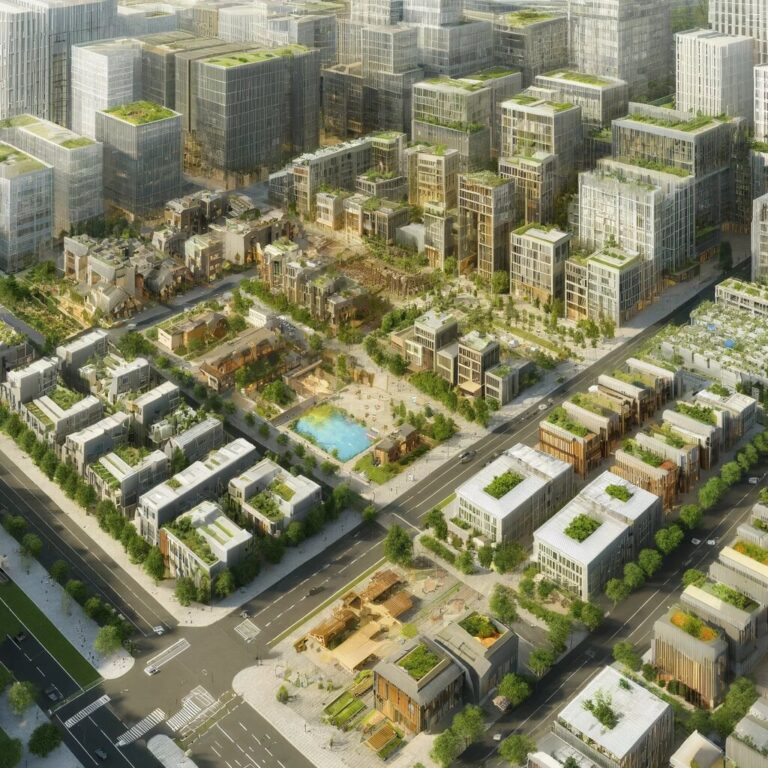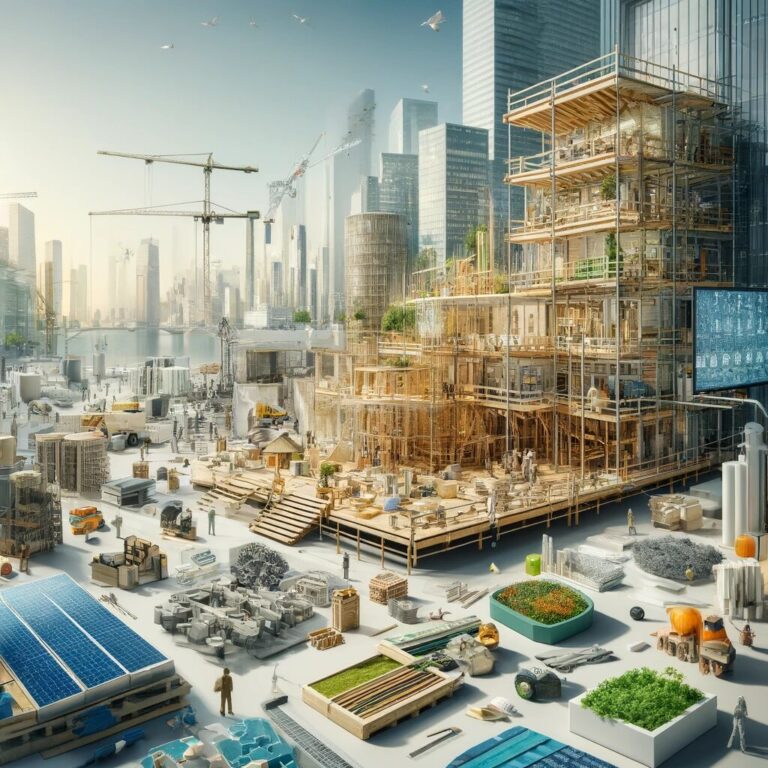In an era where environmental consciousness is at the forefront of design and construction, the demand for sustainable building materials continues to rise. From reducing carbon footprints to enhancing energy efficiency, the construction industry is witnessing a revolution driven by innovation and eco-conscious choices.
In this blog post, we’ll explore ten sustainable building materials that are reshaping construction practices in 2024.

Cross-Laminated Timber (CLT)
Cross-laminated timber (CLT) stands at the forefront of sustainable construction materials. Engineered by layering solid-sawn lumber at right angles, CLT offers exceptional strength, durability, and carbon sequestration properties. Its versatility and eco-friendly attributes make it an ideal choice for a wide range of building applications.

Recycled Steel
Embracing recycled steel in construction projects not only reduces the demand for virgin materials but also minimizes waste. With its enduring strength and endless recyclability, steel emerges as a sustainable solution for structural frameworks and building components.

Laminated Bamboo Lumber
Laminated bamboo lumber combines the sustainability of bamboo with the strength and versatility of laminated construction. Used for decking, siding, dimensional lumber, panels, and trim, laminated bamboo lumber offers a durable and eco-friendly alternative to traditional building materials.
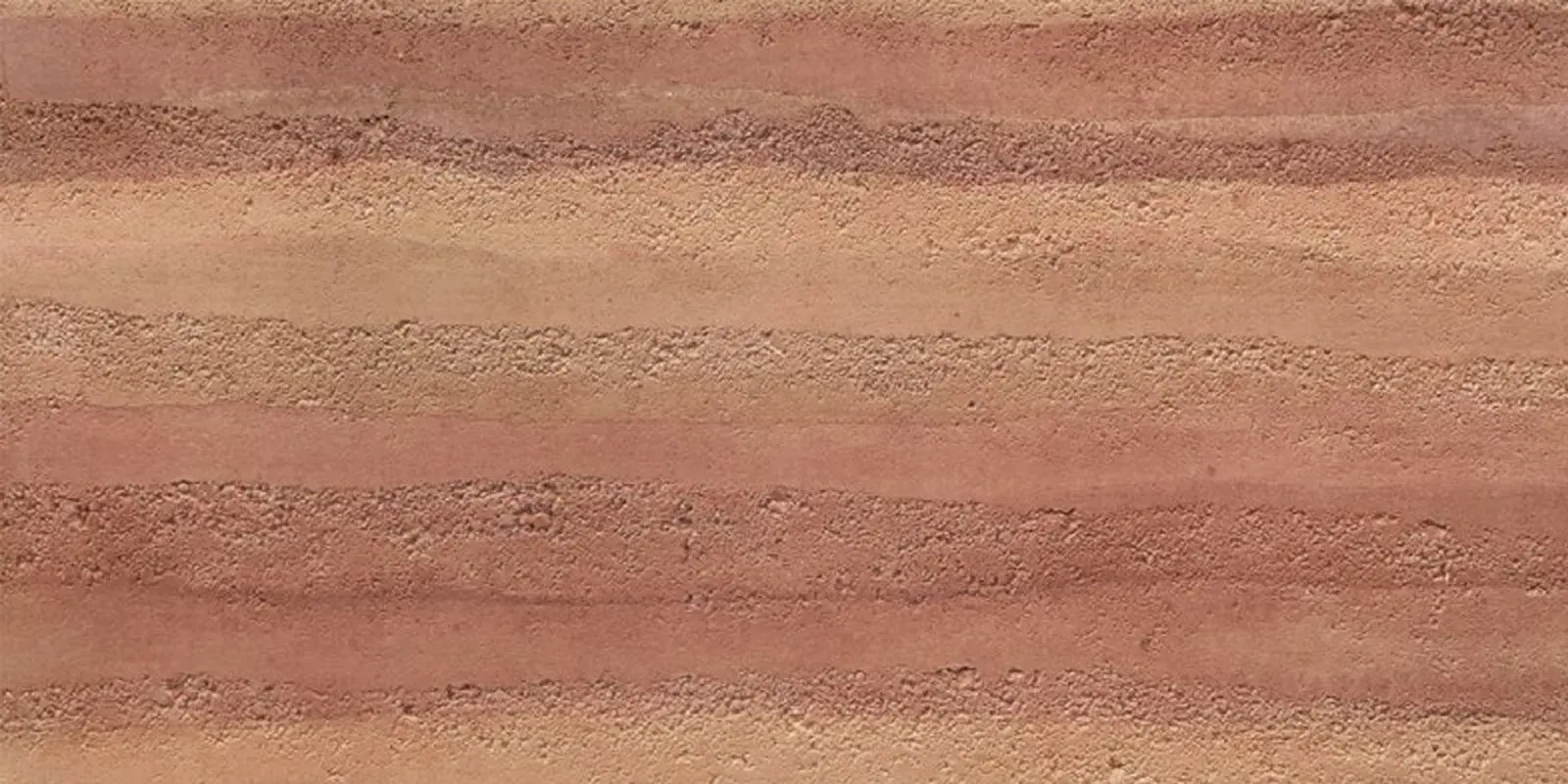
Rammed Earth
Rammed earth construction embodies sustainability through simplicity. By compressing a mixture of soil, gravel, sand, and clay into solid walls, this low-energy building method offers excellent thermal mass properties, promoting energy efficiency and comfort.
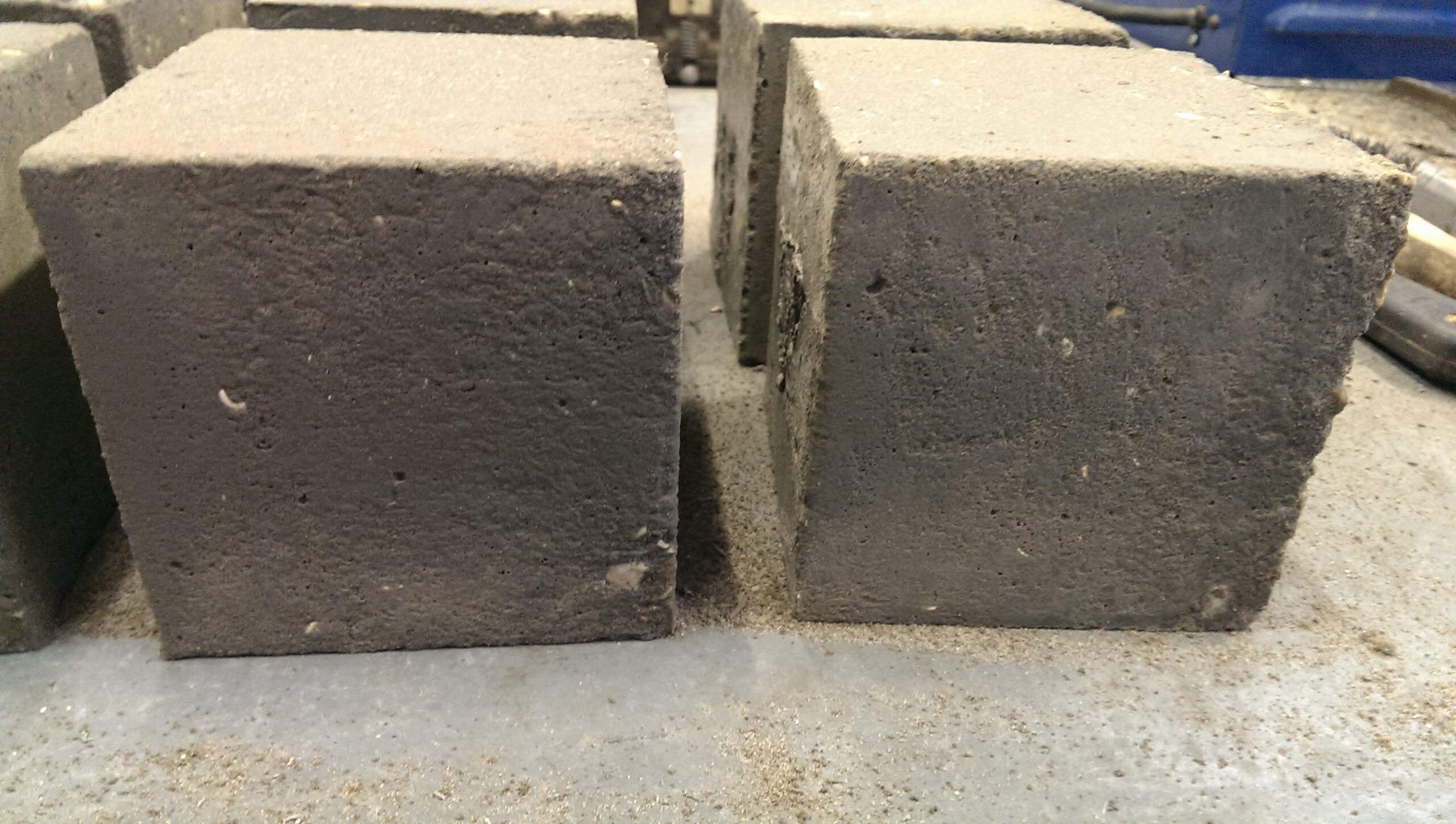
Green Concrete
Green concrete incorporates recycled materials like fly ash, slag, or recycled aggregate, reducing its carbon footprint while enhancing durability. With its lower embodied energy and environmental benefits, green concrete paves the way for more sustainable construction practices.
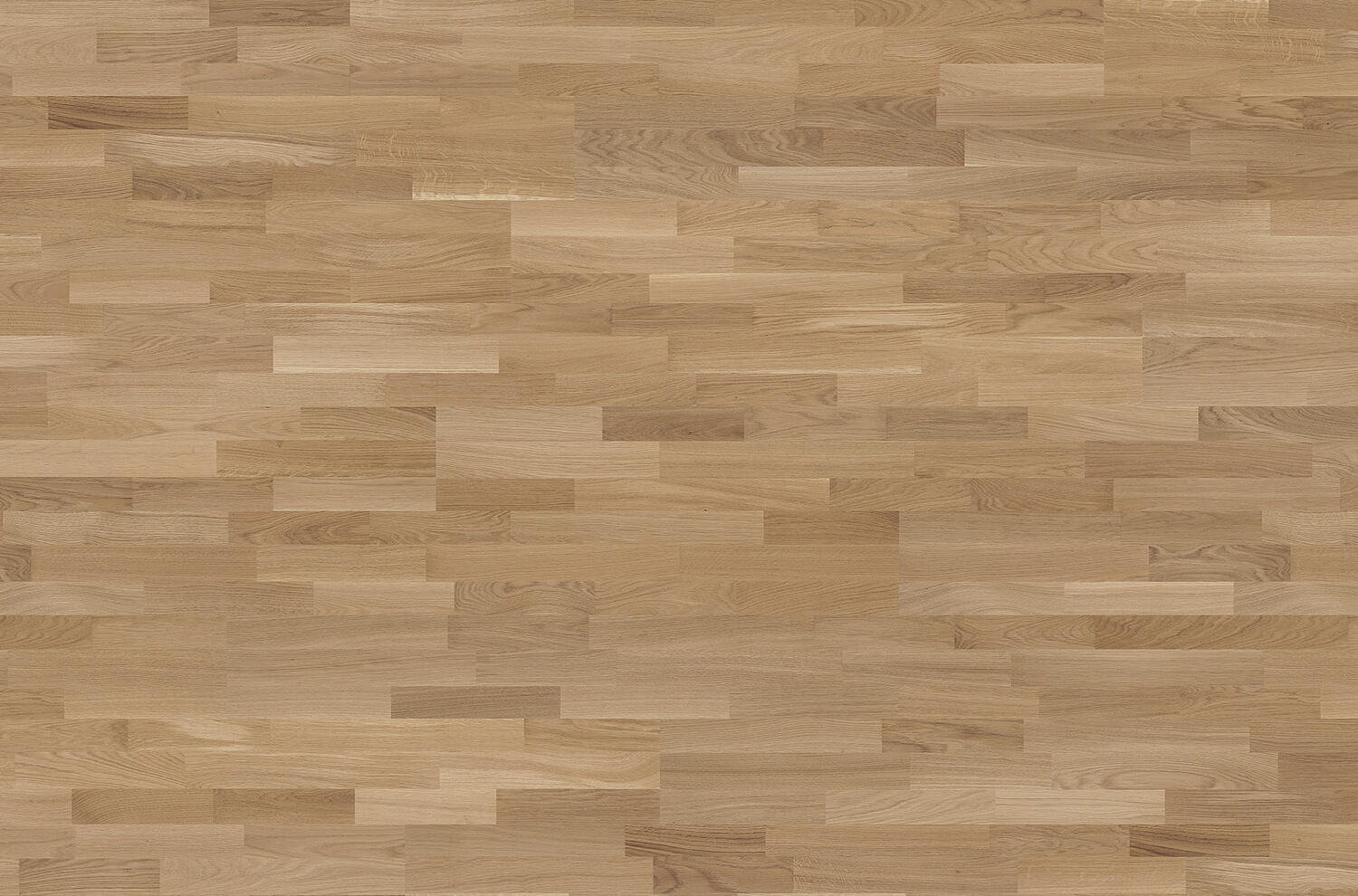
Wood Flooring
Wood flooring offers timeless beauty and sustainability. Harvested from responsibly managed forests, wood flooring provides durability and natural warmth, making it a preferred choice for eco-conscious homeowners and builders alike.
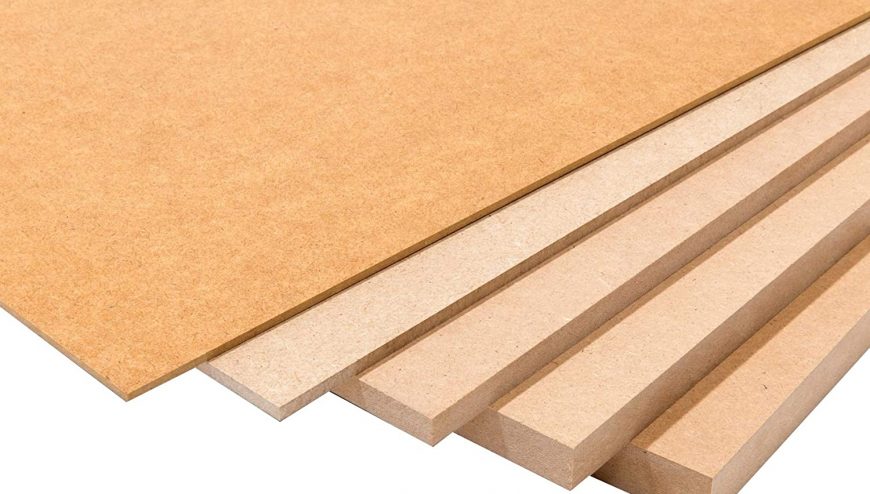
MDF Panels
Medium-density fiberboard (MDF) panels, manufactured from recycled wood fibers and resin, provide a sustainable option for interior finishes and furniture. Their uniform density and smooth surface make them ideal for decorative applications, contributing to eco-friendly interior design solutions.

Particle Boards
Particle boards, also known as chipboard or engineered wood, offer a sustainable alternative for construction. Made from wood particles bonded with adhesives, they can be sourced from sustainably managed forests or recycled wood. With proper manufacturing and low-VOC adhesives, particle boards provide durability for furniture, cabinetry, shelving, and flooring, emphasizing responsible sourcing and manufacturing for reduced environmental impact.
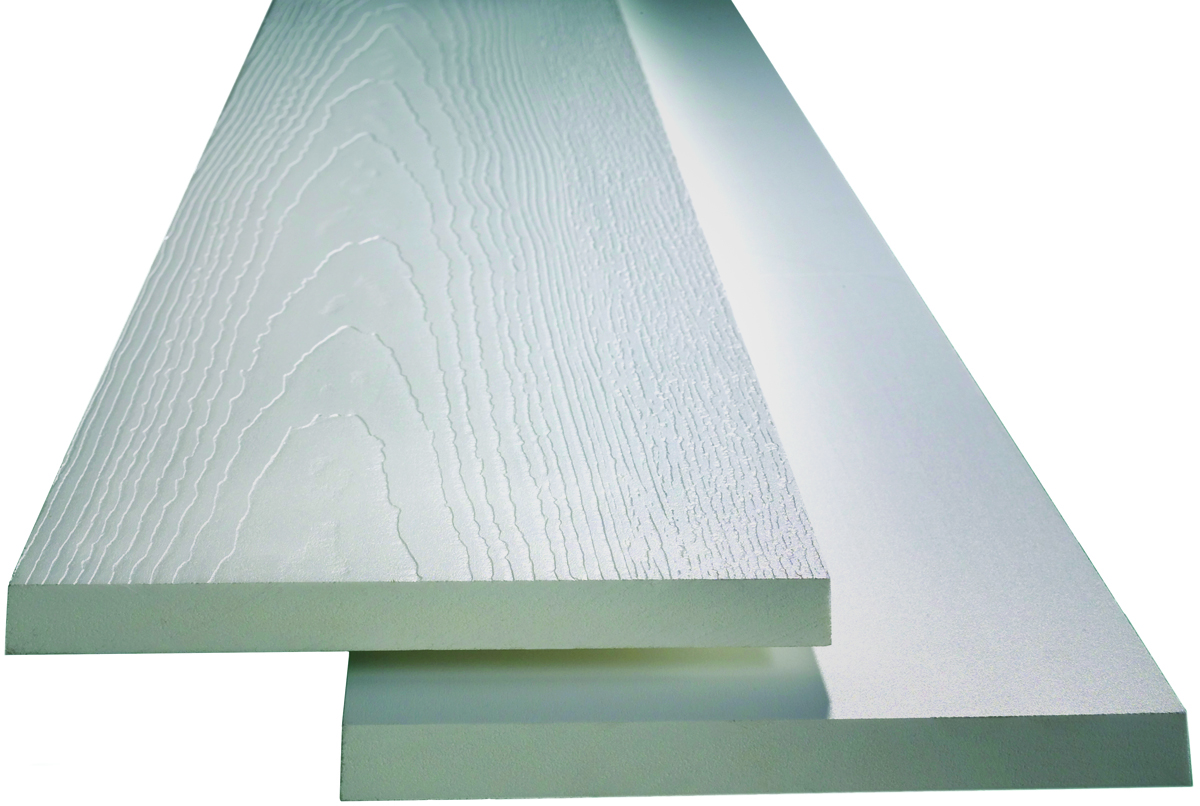
Polyvinyl Chloride
PVC products, such as boards, trim, siding, and panels, offer durability and low maintenance while being recyclable. Their versatility and longevity make them a sustainable choice for various building applications, contributing to reduced environmental impact. Proper disposal and recycling practices further enhance their eco-friendly profile, highlighting PVC's role in sustainable construction practices
Conclusion
As the construction industry embraces sustainability as a core principle, the adoption of these ten sustainable building materials signifies a shift towards a greener and more resilient built environment. By integrating eco-friendly solutions into construction practices, we can pave the way for a sustainable future that prioritizes environmental stewardship and innovation, while also considering Coastal Custom Products’ diverse range of premium, eco-friendly building materials.

